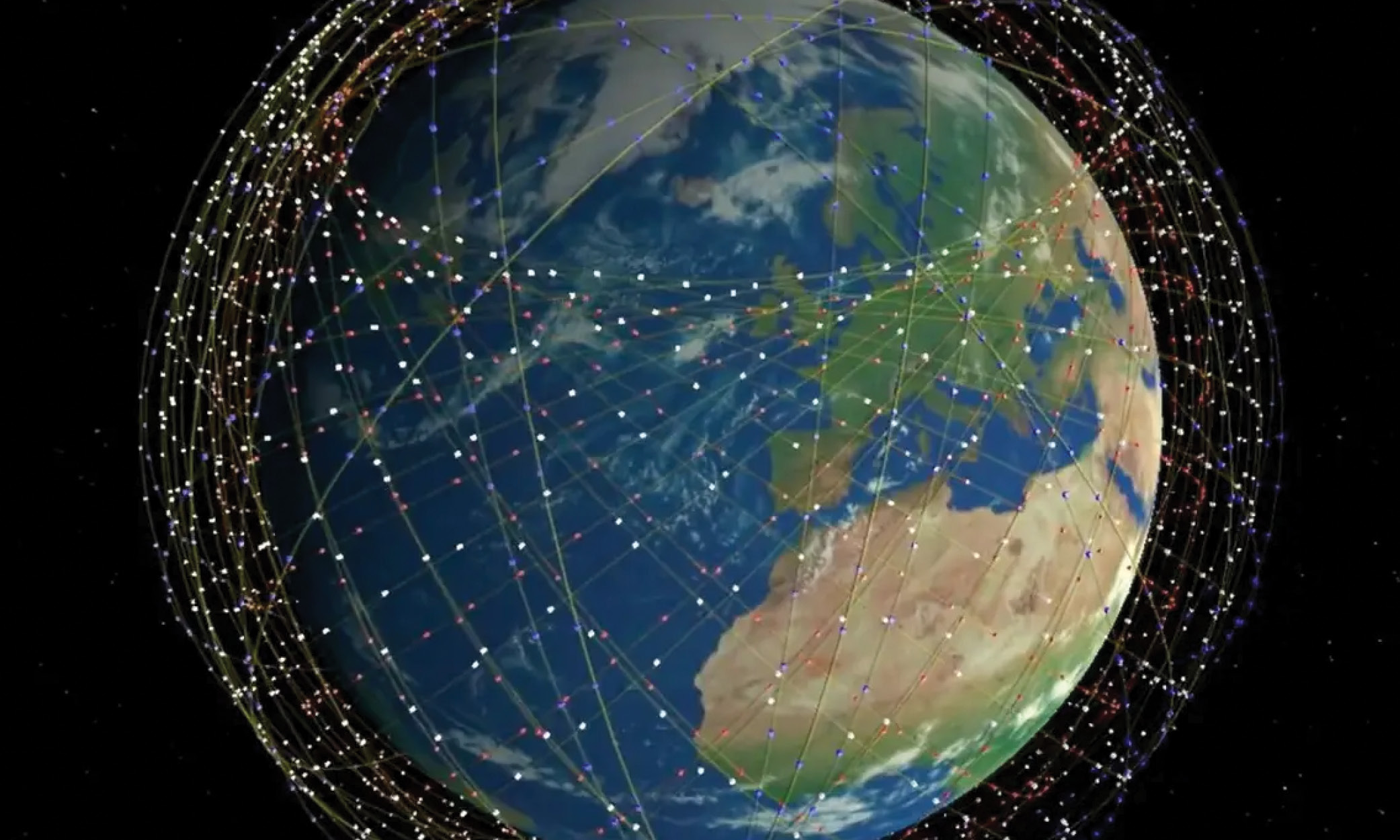Since the ease of access and breakdown of entry barriers, there has been a substantial transformation in the space business. However, which direction would it take next?
The top five players in the field of space exploration are US, China, Europe, India and Russia. Reports suggest that many countries are attempting to develop their sovereign space infrastructure, while there are new entrants such as Australia, UAE, Poland, Africa and Luxembourg.
This reflects that the space sector is getting a lot of attraction from investors, making a playfield for private players. Governments are also increasing their budgetary allocation for space.
As countries understand the value of satellite technology and the data procured from them, the investments will keep gaining momentum.
According to Brookings, currently, 20 countries across four continents have civil space budgets of more than $100 million. In comparison, 70 countries have active space programs including more recent additions like the Philippines in 2019 and Rwanda and Costa Rica in 2021.
Euroconsult’s recently released report titled ‘Prospects for Space Exploration’, the global governmental investments in space exploration will reach $31 billion within the next decade.
The key budget drivers in space are said to be continuation of increased funding in transportation, orbital infrastructure, and lunar exploration.
‘Major programs by the top most countries, along with the active participation of new countries, are the main drivers of growth, while the moon and cislunar space remain the next global strategic priority’, as per the report.

Tectonic Shift
According to Brookings, Countries and companies of all sizes are taking advantage of these trends already. Small satellites make up about 94 percent of all spacecraft launches, growing from a total of 53 to 1,743 from 2017 to 2021.
New companies are leveraging small satellites to build large broadband constellations including SpaceX, OneWeb, Telesat Canada, Samsung, and Boeing, among others.
“Private players are playing a key role in the space dynamic. In the U.S., private players like SpaceX offer the United States the strategic advantage of reusable rockets that can launch to Low Earth Orbit”, says Namrata Goswami, space policy & international relations expert and Professor, Arizona State University.
She points out that both SpaceX and Blue Origin are building rocket systems, with the former having largest satellite constellation in the world, Starlink.
“In the 21st-century, commercialization is the primary fuel, and therefore every nation is currently trying to get better with their available resources, for example, unlike the space race, today countries are trying to use space technology to add value to their economy and enhance other industrial verticals”, believes Omkar Nikam, space & defense expert.
Nikam is of the view that space is also becoming more of a strategic tool to navigate the global security sphere and to complement and enhance the strategic aspects for the nations to achieve an edge in geopolitics.
The post-colonial developing world has benefitted greatly from the economic shift that has taken place in the post-cold-war era, in large part on the back of innovations in connectivity and communications.
“At the end of the Cold War in 1990, 82% of the global GDP in dollar terms was being produced by OECD countries, in 2000 it became 80%, and in 2020 it became 60%. Today it is 44% for the first time in human history”, remarks Syed Akbaruddin, India’s Former Permanent Representative to the United Nations.

Companies belonging to the former Global South, India and China, are leaving their footprint in space.
In China, commercial firms such as ispace and Linkspace are building reusable rocket technology. While India privatized space manufacturing this year, with an aim to increase its share of the global space market to more than five-fold by 2030.
“Galactic Energy is investing in satellite internet constellations to include broadband capability that can support China’s hypersonic vehicles” adds Goswami.
Also Read: New Space Economy: The Future is Now?
Widening Participation
With technological innovations in place, there is a growing trend of miniaturization of equipment like satellites, sensors, cameras, and the decreasing launch costs, has encouraged many countries to develop their sovereign space infrastructure and be a part of this Space Race.

“In the future, AI advancements, other data sources and satellite innovations have the potential to enhance spaced-based data for companies as these technological areas help increase access to a diverse array of space-based data and services at more affordable prices,” states Dylan Taylor, Chairman & CEO, Voyager Space Holdings to Forbes.
“Role of private both US and China as well as elsewhere is likely to influence thinking and strategy. Their power in the strategies of nations is likely to increase”, says S Chandrashekhar, JRD Tata Visiting Professor, National Institute of Advanced Studies.
Nikam adds, “Private players are still heavily dependent on the government contracts in the upstream market. One key aspect that needs to change is the way Private players operate with the government narrative.”
He emphasizes on the need for commercial space players to develop their independent narrative strategy and accordingly scout for new market opportunities.
Also Read: Brave New World of Space
Towards a New Monopoly?
From the Sputnik in 1957 till today, there are around 9,000 satellites in orbit. Ambassador Akbaruddin states that “Just one company plans to launch 12,000 satellites, and It is also seeking approval of 30,000 more low earth orbit satellites.”
Calling Elon Musk as akin to a new sovereign of low-earth orbit, he paints a grim reality. Critics are saying that Elon Musk sovereignty will soon be in place in the lower earth orbit.
“Elon Musk singlehandedly owns more satellites than China, Europe, Russia, Japan, India put together. He has the most powerful rocket and an operational launch and space capability that is pushing US space power in a significant way”, adds S Chandrashekhar.
With the massive financial wherewithal, technological edge, and resources at disposal, this means that Musk is well-positioned to set the rules, standards, the procedures for markets and to an extent even dominate the innovation cycles for future space technology.
Moreover, Amazon’s OneWeb has approval from the US for a constellation of 3,600 satellites and it has approval from the FCC, (the US Federal Communications Commission) for another 6,000 satellites.
“China has plans to launch two constellations totalling 13,000 satellites. They are trying to promote 6G using those satellites. These are all space faring nations and big companies. But look at what’s happening elsewhere. Rwanda, which set up its space endeavor just recently has applied to the International Telecommunications Union for approval of 300,000 satellite launches.”
Market Concerns
The number of working satellites are increasing every year by the margin of approx. 30-50% because new non-state commercial actors are exploiting large costs to build businesses in space.
Rush to tap commercial space has fueled concerns because there is no space traffic management system for low earth orbit satellites, and this is where most commercial satellites are now targeted.
Nikam adds, “It all boils down to national interests and the common interests of a group of nations. Encouraging multilateralism through government institutions is not enough, hence the involvement of commercial players, think tanks and other organizations should be increased in the diplomacy sphere.
These engagements will bring a much wider perspective on topics such as ‘Sustainability’ in the space industry, as well as also help create a strong foundation for the peaceful use of space resources.
International Space Laws
Orbital debris has been a problem since Sputnik1. There are at least half a million pieces of debris circulating and even tiny fragments can destroy space assets on impact.
The Kessler syndrome, according to the European Space Agency, even if all launches were stopped today, the amount of space debris in low earth orbit would still likely to increase.
Ambassador Akbaruddin stated, “The private sector will not bear the large upfront costs of placing valuable hardware in an orbit or tie up with those who put up satellites if celestial trash makes satellite operations too risky.
The 1967 outer space treaty prevents governments from extending their jurisdiction into space, but they retain the authority over objects put into space including the rights to destroy them so they have extraterritorial sovereignty over their own objects. Is this adequate?”
He mentioned that there is no international coordination mechanism from where you deploy your constellation, regulations exist about interfering with broadcast frequencies or other satellites, but no international system of space traffic control. There is no independent global body providing data on satellite positioning and trajectories.
“That job is currently done by the US military, but some information is still classified. There are no binding regulations to help others avoid spacecraft or who should move out of the way first. And there are no common enforcement principles.”
“There has to be consensus on what distance constitutes a ‘safe close approach’ of one satellite to another. Nations need to agree to a set of rules like debris removal, space traffic management and a commitment not to test an Anti-satellite Weapon in space that creates debris”, says Goswami.
Also Read: India & China: Contrasting Space Programs









